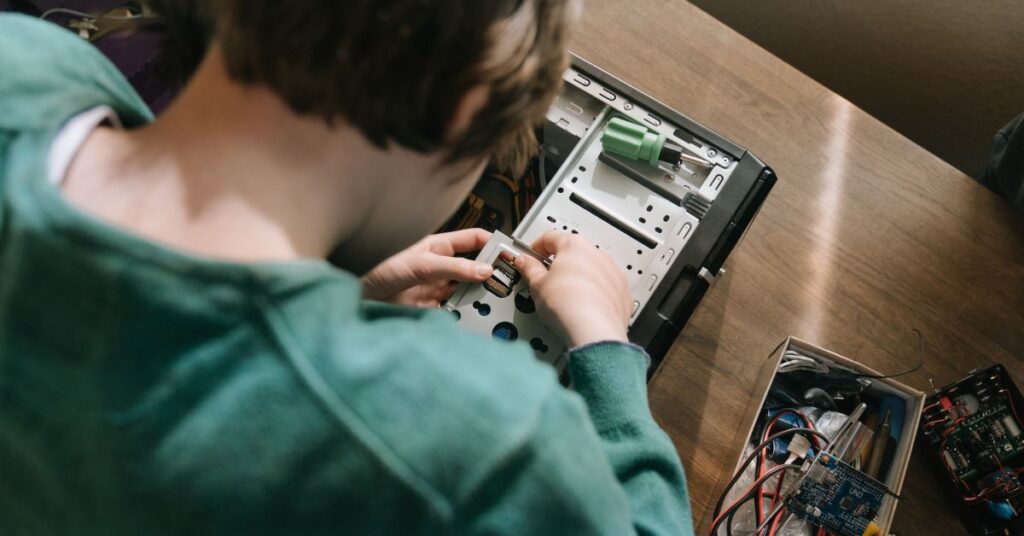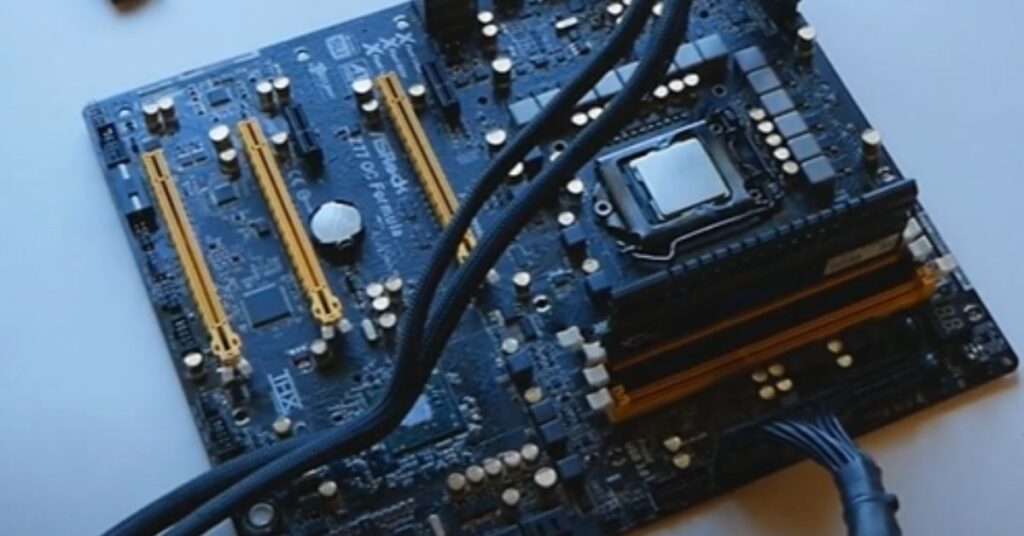When it comes to understanding computers, one component that often confuses is the motherboard. Many people wonder motherboard is located in a CPU I think some confusion here. So, where exactly this essential piece of hardware is located within the CPU?
Table of Contents
What is CPU?
The CPU, or Central Processing Unit, is often referred to as the “brain” of a computer. It’s a hardware component that carries out instructions provided by computer programs. Essentially, the CPU is responsible for executing a wide range of tasks, from basic arithmetic calculations to complex data processing.
At its core, the CPU consists of one or more processing units called cores, each capable of executing instructions independently. These cores work in conjunction with other components, such as cache memory and the system bus, to process data and execute instructions efficiently.
The CPU’s performance is often measured in terms of clock speed (measured in GHz) and the number of cores it possesses. Higher clock speeds and more cores generally result in faster processing and better multitasking capabilities.
Further reading: Where the motherboard is located in a computer?
Where is the motherboard is located in a CPU?

The motherboard is not located “in” the CPU; rather, the CPU is mounted onto the motherboard. The motherboard serves as the main circuit board of a computer system and provides a platform for connecting various components, including the CPU. The CPU is typically seated in a specific socket on the motherboard, where it makes electrical contact and communicates with other parts of the system. So, to be clear, the motherboard is located within the computer case, and the CPU is mounted onto the motherboard, usually in a designated CPU socket.
Relationship Between the Motherboard and CPU

The motherboard and CPU share an intimate and essential relationship within a computer system. While they are distinct components, their collaboration is crucial for the system’s functionality and performance.
Here’s a closer look at their relationship:
- Mounting the CPU: The CPU is physically mounted onto the motherboard, typically using a specific socket designed for the CPU’s form factor. This socket ensures a secure connection between the CPU and the motherboard while providing electrical contact for data transmission.
- CPU Socket: The motherboard features a CPU socket, also known as a CPU slot or CPU socket connector. This socket is specifically designed to accommodate a particular type of CPU, ensuring compatibility between the CPU and the motherboard. Different CPU socket types exist, such as LGA (Land Grid Array) and PGA (Pin Grid Array), each tailored to different CPU architectures.
- Electrical Connections: The motherboard provides electrical connections that enable communication between the CPU and other components, such as RAM, storage devices, and expansion cards. These connections facilitate the transfer of data and instructions between the CPU and other system components, allowing for seamless operation.
- Chipset Support: The motherboard incorporates a chipset, which acts as a bridge between the CPU and other peripheral devices. The chipset manages data flow between the CPU, memory, storage, and input/output devices, optimizing system performance and ensuring compatibility between different components.
- Overclocking and Power Delivery: Some motherboards offer features for overclocking the CPU, allowing users to increase their clock speed for enhanced performance. Additionally, the motherboard regulates power delivery to the CPU, ensuring stable operation and preventing overheating.
Further reading: How does motherboard affect performance?
Conclusion
It’s critical to understand the connection between a computer system’s motherboard and CPU. It’s important to realize that this is not the case, despite the question’s suggestion that the motherboard is “in” the CPU. Rather, the motherboard acts as the support system for the CPU and other important parts.
Located inside the computer casing, the motherboard serves as a central hub for connecting different parts of the hardware. It ensures a safe and effective connection by housing the CPU in a designated socket. The motherboard also makes it easier for the CPU and other components to communicate with one another, which makes the system function as a whole.
Although the CPU is sometimes referred to as the “brain” of the computer, it depends on the motherboard to supply the infrastructure needed for it to function. A computer system’s performance and functionality depend on the symbiotic relationship between the motherboard and CPU.
FAQ
Is the motherboard located inside the CPU?
No, the motherboard is not located inside the CPU. The CPU is one of the components mounted onto the motherboard, which serves as the main circuit board of a computer system.
How does the CPU connect to the motherboard?
The CPU is mounted onto the motherboard using a specific CPU socket. This socket is designed to accommodate the CPU’s form factor and provides electrical contact for data transmission between the CPU and other components.
Can I upgrade the CPU without replacing the motherboard?
In some cases, it is possible to upgrade the CPU without replacing the motherboard, but compatibility must be carefully considered. The new CPU must be compatible with the existing motherboard’s socket and chipset.
How do I choose a motherboard and CPU combination?
When selecting a motherboard and CPU combination, consider factors such as compatibility, performance requirements, budget, and intended use. Researching specifications and seeking expert advice can help make an informed decision.
